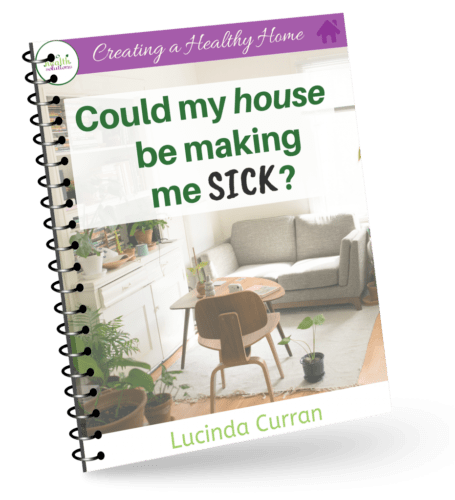Lead – Creating Awareness
 Lead Poisoning Prevention is Better than Cure
Lead Poisoning Prevention is Better than Cure
When I first began assessing buildings for health hazards, I was dumbfounded to discover leadlighting (aka stained glass in the US) still used lead. Yes, despite the known risks, lead is still used for leadlighting!

My concerns:
- Anyone creating leadlight glass products would have a higher than usual exposure to lead
- Many houses have leadlighting throughout, especially the “Golden Age” homes – so these doors and windows are quite accessible to children and pets
- As well, older leadlighting can begin to break down, so lead levels in house dust can be elevated
Lead tastes sweet (so I am told!) – which is why so many children suck on paint chips.
Recently I created three images for the Volcano Art Prize – run by LeadSafeWorld.
“Test Your Soil”
Lead can easily contaminate our soil – from traffic dust, breaking down paints, and even through the water (lead-based solders, or water collected from a roof that has lead flashing).
Message: if you are planning a veggie garden or a chook run, it is recommended that you have the soil tested first.

A very fashionable paint look at the moment is the “distressed look.” More often than not, this is deliberately done. However, peeling paint on older buildings very likely contains lead – and then sanding is definitely not recommended.
Message: if you have an older building, either test the paint for lead OR encapsulate it by adding layers of paint and be sure never to sand it.

This image was designed to help people remember that lead dust, amongst many other contaminants may be found in the roof/ceiling void.
Message: Before any renovation, even the installation of downlights, have a member of the Australian Dust Removalists Association (ADRA) remove the dust from your ceiling void safely.

Please help create awareness. Lead poisoning is not as uncommon as it should be.
If you have any concerns – please feel free to get in touch.
#lead #leadpoisoning #testforlead




